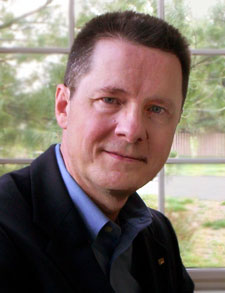It is a strange reversal, when you think about it. Jesus is out of the tomb, risen from the dead and on the loose in the world – and the disciples? Hiding behind locked doors, prisoners of fear.
There was little conversation, nobody had remembered to get something to eat, but no one really felt like eating anyway.
Mary had told them that she had seen the Lord and what he had said to her, but her tesimony, for whatever reason, hadn’t made the slightest difference. We don’t know if they didn’t believe her of if they couldn’t imagine what her words might mean.
One of the stories I suspect was in circulation in the first century but John didn’t write down, is the one about Mary pulling her hair in frustration: all she had were words, and her words were not enough to break the paralysis of fear and guilt, not enough to let them hear what she had heard and see what she had seen.
It is strange reversal; Jesus is out of the tomb, and the disciples are in it.
Then Jesus came and said, “Peace be with you.”
The first word of the Risen One to the gathered disciples was peace. The last time they had been together, he had told them, “Peace I leave with you; my peace I give to you. I do not give as the world. Do not let your hearts be troubled, and do not let them be afraid (14:27).” And now Jesus stood among them, after their betrayal, their denial, and their abandoning him – Jesus stood among them and spoke peace into their troubled, fearful hearts.
He showed them the wounds in his hands and his side, and his presence transformed the dark tomb into a house of joy, with laughter pouring into the street. Their fear melted away and the living Christ was once again the center of their lives.
“Peace be with you,” he said, not, “Shame on you, you sorry bunch” or “OK, friends, let’s talk about this,” but, “Peace be with you. As the Father has sent me, so I send you.”
Suddenly they saw the world outside, the world of sin, death, and fear no longer as a threat, but as the object of God’s love. Only moments ago they had been little more than bodies in a tomb, now they were a community with a mission, sent by the risen Christ.
In the book of the prophet Ezekiel, the prophet looks at a valley full of bones, and the Lord asks him, “Mortal, can these bones live?” And the Lord tells him to prophesy to these bones, to speak to the bones and say to them, “O dry bones, hear the word of the Lord. I will cause breath to enter you, and you shall live. I will put breath in you, and you shall live, and you shall know that I am the Lord (Ez 37:1-14).”
In Ezekiel’s day, the bones represented the people of God in exile, lifeless, dry, dispirited and discouraged.
I know Mary must have felt like she was talking to a pile of bones when her words couldn’t break through the pall of fear and grief that lay on the disciples. But now Jesus was in their midst and he breathed on them and they received the Holy Spirit. A small band of fearful men, held together solely by habit, shame and fear – now they were the church, commissioned and empowered by the living Christ, born into living hope.
Can these bones live? We shall see – the mission of Christ continues, and his disciples follow him telling the story, forgiving sins and serving others until the peace of Christ, the shalom of God, fills earth and heaven.
Since the days of Mary and the other apostles, frightened disciples could be church because the Risen One keeps breaking in on us, breathing on the white bones of our lives, leading us out of our tombs, and placing in our hands the gifts of God for the world: peace and forgiveness. Because Christ is risen from the dead, we no longer live toward the horizon of death, but toward the horizon of fullness of life for all creatures.
The resurrection isn’t something that happened to Jesus two millennia ago, but rather something that began with him and continues with those who hear the word of life. It is the transformation of our old, tired world into the new creation. It is the wind that blows from the future of fulfilment, the breath that brings life to dry bones, the dew from heaven that renews the earth.
Thomas wasn’t there when Jesus came in the evening of that day. Neither were any of us around then. All we have is what Thomas was given, the words of witnesses.
The other disciples said to him, “We have seen the Lord.” But their words, just like Mary’s before, didn’t have the power to break through whatever kept this disciple from hearing them with faith.
He didn’t know whom or what they had seen, what apparition might have fooled them. He needed to see for himself, and more than see.
“Unless I see the mark of the nails in his hands, and put my finger in the mark of the nails and my hand in his side, I will not believe.”
He needed to see, he needed to touch, he needed to get close. Thomas wanted proof – not a convincing argument about the general possibility of bodily resurrection, but tangible proof that this Risen One was indeed the Crucified One.
He had questions nobody could answer for him with a reference to scripture or to some other authority. He needed to see, he needed to touch, he needed to get close.
A week later his disciples were again in the house, and Thomas was with them. That is remarkable, isn’t it?
There are plenty of churches where you are no longer welcome when your questions cannot be answered with a quick reference to scripture or to some other authority.
There are too many Christian communities where no one voices their doubt or their struggles for fear of being excluded or declared spiritually challenged.
And there are countless individuals who hear the words of Mary and the disciples, but they won’t be back a week later with their questions and their need to experience for themselves what the words declare.
In this gem of a story, the community of disciples consists of those who have seen and those who have not; no one is pushed out or forced in; they’re together. And the scene repeats itself, solely for Thomas’s sake, we suppose.
Jesus comes and stands among them and says, for the third time now, “Peace be with you.” He turns to Thomas and, far from rebuking him for his stubborn insistence on something more tangible than words, says, “Put your finger here and see my hands. Reach out your hand and put it in my side. Do not doubt but believe.”
And Thomas responds, “My Lord and my God.”
The one who wanted proof, the one who didn’t want to settle for repeating the words of others but held out for an experience of the Risen One on his own terms, this Thomas made a confession of faith unlike any other in the gospels.
Thomas has been remembered in the church as the doubter par excellence and called to the aid of authorities whenever the questions of some became uncomfortable and needed to be squelched. I don’t think we should remember him as a doubter, though, but rather as one who insisted on the continuity between the ministry of Jesus and the mission of the church, one who insisted that the glory of God is revealed in the wounds of the crucified Jesus.
The gospel according to John begins, “In the beginning was the Word, and the Word was with God, and the Word was God.” Close to the end of the gospel, it is Thomas who, after much struggle, affirms that statement in the presence of Jesus, crucified and risen.
The resurrection is not something that happened to Jesus two millennia ago, but rather something that began with him when God raised him from the dead.
The disciple whom Jesus loved came to the tomb and saw the linen wrappings; then he went inside, got a little closer, and he saw and believed.
Mary Magdalene had seen angels at the tomb, but they had no comfort for her; then a stranger spoke her name, and she recognized Jesus and believed.
The disciples believed when they saw the risen Jesus, and they rejoiced, “We have seen the Lord!”
Thomas believed when he saw Jesus with the other disciples, and the word of the risen Jesus moved him from unbelief to confessing, “My Lord and my God.”
Not a bad conclusion to the gospel story.
But in the final verses of this chapter it becomes clear that the Sunday evening scene wasn’t repeated solely for Thomas’s sake, but also for ours.
“Blessed are those who have not seen and yet have come to believe.”
We have not seen what the first disciples have seen, but we hear their witness.
In the final verses of the chapter, we read a note from the author to the readers, “Now Jesus did many other signs in the presence of his disciples, which are not written in this book. But these are written so that you may come to believe that Jesus is the Messiah, the Son of God, and that through believing you may have life in his name.”
We trust the Word that comes to us through the proclamation of the first witnesses.
We follow the call that comes to us through their word and the work of the Holy Spirit.
We continue the mission of Jesus Christ, embodying his peace and forgiveness in how we live our lives.
We believe, not because we have seen, but because we trust that we will see the shalom of God filling earth and heaven.
And we continue to be witnesses who declare what we have heard, what we have seen with our eyes, what we have looked at and touched with our hands, concerning the Word of life.
The resurrection continues.
Audio of this post is available.
















